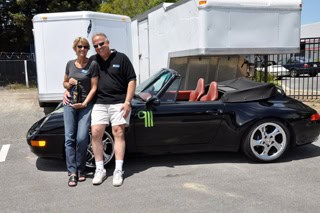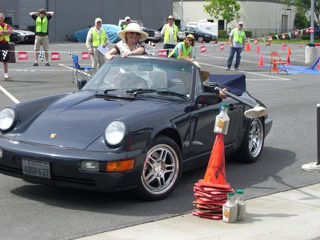
The term “rallye”, as a branch of motorsport, dates from the first Monte Carlo Rally of January 1907. Until the late 1920s, few if any other events used the term. Rallying itself can be traced back to the 1894 Paris-Rouen Horseless Carriage Competition (Concours des Voitures sans Chevaux), sponsored by a Paris newspaper, Le Petit Journal, which attracted considerable public interest and entries from leading manufacturers. This event led directly to a period of city-to-city road races in France and other European countries, which introduced many of the features found in later rallies: individual start times with cars running against the clock rather than head to head; time controls at the entry and exit points of towns along the way; road books and route notes; and driving over long distances on ordinary, mainly gravel, roads, facing hazards such as dust, traffic, pedestrians and farm animals. When you hear the term “rallye”, you probably think of super modified Subarus, Audis, Lancias, Peugeots etc. ripping through uncharted lands, racing at breakneck speed from one point to another. That’s not quite what we have in mind here at LPR. In fact, just the opposite!
The LPR Rallye Approach

Rallyes come in all shapes and sizes. Here are a few:
A Point-to-Point Rallye
You choose your own course, rather than following ours. Instead of Route Instructions, we will give you a list of questions and a map with spots marked on it. One question can be answered at each spot on the map. Of course to make it more interesting there will be too many to visit them all in the 3 hours you’re given, so it’s up to you to develop a strategy for visiting as many as you can, in whatever order you decide. Those farther away will likely have higher points assigned to the answers. Guessing at answers is dangerous, because wrong answers count more against you than blanks. Coming in late triggers heavy penalties. Since speed and driving skill do figure heavily into your success, this comes closer to being a “race” than any other rallye. But, like all our events, breaking the law will get you disqualified.
Navigational/Gimmick Rallye

A / B Rallye
The A/B Rallye is very similar to the Navigational/Gimmick Rallye. Each route instruction will have two parts, A and B. Following the rules of the game you will have to select which part is correct and follow that instruction. Of course these instructions will be laced with gimmicks designed to trick you. Scoring is based almost exclusively on which part of a route instruction you execute, part A or part B.
Hare and Hound (or Fox and Hound) Rallye
You are the hound and it is your task to follow your prey from the start to the finish. The only clues you will have to know that you are on the right course are to locate the preys “droppings”. To be environmentally friendly, the droppings will consist of markings on the road, generally mounds of flour or lime, within a quarter mile of each intersection. You are given a starting point and a destination. You follow the route by finding “droppings” at intersections. If a mound is found, then you are on the correct course. A working odometer is needed as the mileage clocked during the event that is closest to that of the rallyemaster wins.
Q–A (Question and Answer) Rallyes
Various Questions are interspersed among the Route Instructions. At the appropriate points in the rallye, you record your Answers on the score sheet. This is a very low-key, sightseeing event, where you will enjoy the drive while keeping your eyes peeled for answers
T&D (Time and Distance, TSD, Time–Speed–Distance) Rallyes
You follow Route Instructions that direct you on a course at assigned speeds. You are timed when you arrive at checkpoints, which are usually at undisclosed locations. The correct time of arrival is based on the distance traveled and the speeds assigned. Upon arrival at a checkpoint, you are assigned an out time, the time at which you are to start the next leg.

